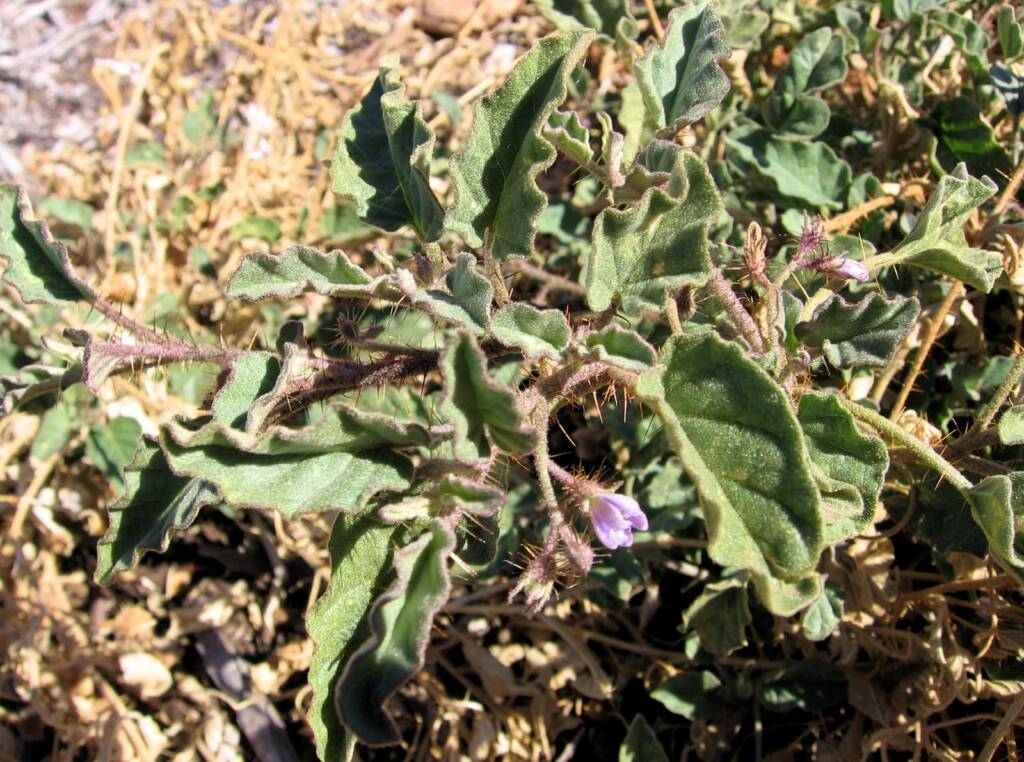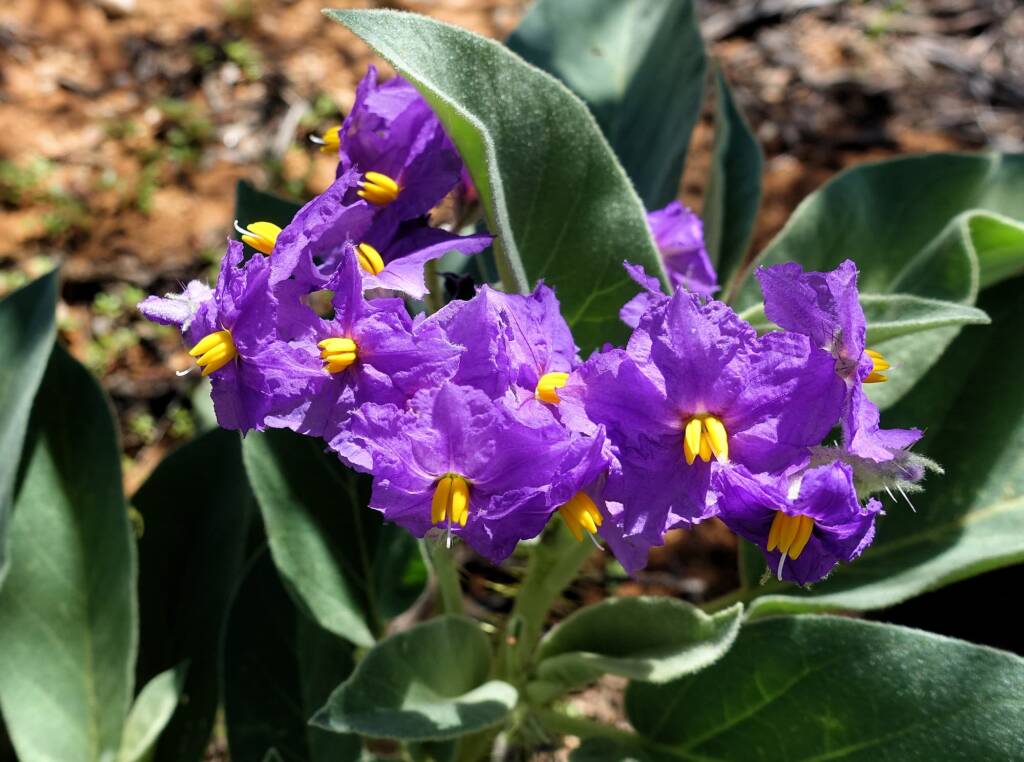SolanumBush Tomato Solanum centrale Solanum chippendalei Solanum ellipticum Solanum quadriloculatum
Solanum – Bush Tomato
Genus Solanum
The Solanum genus contain a variable number of annual and perennial plants. Whilst most are poisonous, there are a number of edible fruits, leaves, tubers, including the cultivated species known as ‘bush tomato’ or ‘bush raisin’, which include Solanum esuriale, S. centrale, S. ellipticum and S. cleistogamum (although S. coactiliferum is only edible after removal of the skin).

In Central Australia and the Northern Territory, the genus Solanum that include the bush tomato are usually found as small shrubs anywhere from 20 cm to about 1 metre in height. With a covering of hairs, the star-shaped flowers are mostly in clusters, often purple, with variation of lilac and pink, and have the yellow anthers projecting from the centre of each flower.
The fruit look like small tomatoes of about 0.5 cm to 3 cm in diameter. The fleshy fruit vary in colour and may be green, yellow, brown, red or black, but are poisonous when unripe (usually the green state). The ripe fruit are pale yellow, sometimes with a green, purple or brown tint.

The wild tomato are often seen along roadside, and can be seen in colonies in most outback habitats, especially after fire or rain.
- Bush Tomato / Bush Raisin / Desert Raisin (Solanum centrale)
- Bush Tomato (Solanum chippendalei)
- Potato Bush / Native Tomato (Solanum ellipticum)
- Wild Tomato (Solanum quadriloculatum)
| CAUTION If you are not an expert at identifying the plant, ‘DO NOT’ eat the fruit, as some Solanum species that look similar, are toxic. In the Solanum species, the unripe fruit contains the toxin solanine (the same as that found in green potatoes). Only a select few species of Solanum produce edible fruit when fully ripen. Others remain toxic. There are many other Solanum species that resemble Solanum centrale, and only some of them produce edible fruit eg Solanum chippendalei and Solanum ellipticum. Some closely related species produce fruit that are toxic. |

- Scientific classification
- Kingdom: Plantae
- Clade: Tracheophytes
- Clade: Angiosperms
- Clade: Eudicots
- Clade: Asterids
- Order: Solanales
- Family: Solanaceae
- Subfamily: Solanoideae
- Tribe: Solaneae
- Genus: Solanum
SolanumBush Tomato Solanum centrale Solanum chippendalei Solanum ellipticum Solanum quadriloculatum
FloraFlora in Australia Flora Index Acacia Anigozanthos (Kangaroo Paws) Annual Yellowtop Apium prostratum subsp. prostratum var filiforme Apple Bush (Pterocaulon sphacelatum) Australian Bluebell Australian Gossypium Banksia Batswing Coral Tree Billy Buttons Birdsville Indigo Blue Pincushion Bush Banana Callistemon Callitris drummondii (Drummond’s Cypress Pine) Calothamnus quadrifidus Cape Honeysuckle Cassia fistula (Golden Shower) Cattle Bush Common Heath Crotalaria Darwinia wittwerorum (Wittwer’s Mountain Bell) Daviesia oppositifolia (Rattle-pea) Desert Oaks Drumsticks Eremophila Eucalyptus Ficus Flannel Cudweed (Actinobole uliginosum) Georges Indigo Goatshead Burr (Sclerolaena bicornis) Golden Everlasting Goodenia Gossypium Grass and Grasses Grass Trees Grevillea Grey Germander Hakea Kapok Bush (Aerva javanica) Lambertia sp Leptospermum MacDonnell Ranges Cycad Maireana scleroptera Mexican Poppy Minnie Daisy Mistletoe Family Nardoo Native Apricot Nicotiana megalosiphon subspecies sessilifolia Nuytsia floribunda Orange Spade Flower Orchidaceae Parakeelyas (Calandrinia) Pebble Bush (Stylobasium spathulatum) Perennial Yellow Top Pink Everlasting Pink Rock Wort Poached Egg Daisy Portulaca Proteaceae Ptilotus Quandong Resurrection Fern Rosy Dock Ruby Saltbush Santalum Solanum Spike Centaury Spinifex Storkbill (Erodum cygnorum) Striped Mint Bush Sturt’s Desert Pea Sturt’s Desert Rose Tall Saltbush Tangled Leschenaultia Tar Vine Tribulus eichlerianus Upside-down Plant Urodon dasyphylla Variable Daisy Waratah (Telopea) Wertabona Daisy White Cedar (Melia azedarach) White Indigo White Paper Daisy Wild Passionfruit Wild Stock Woolly-Headed Burr Daisy Woolly Bush Yellow-keeled Swainsona
